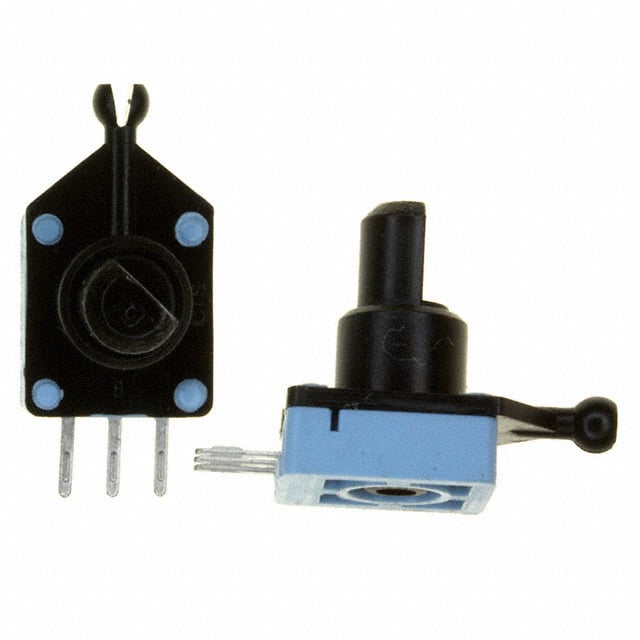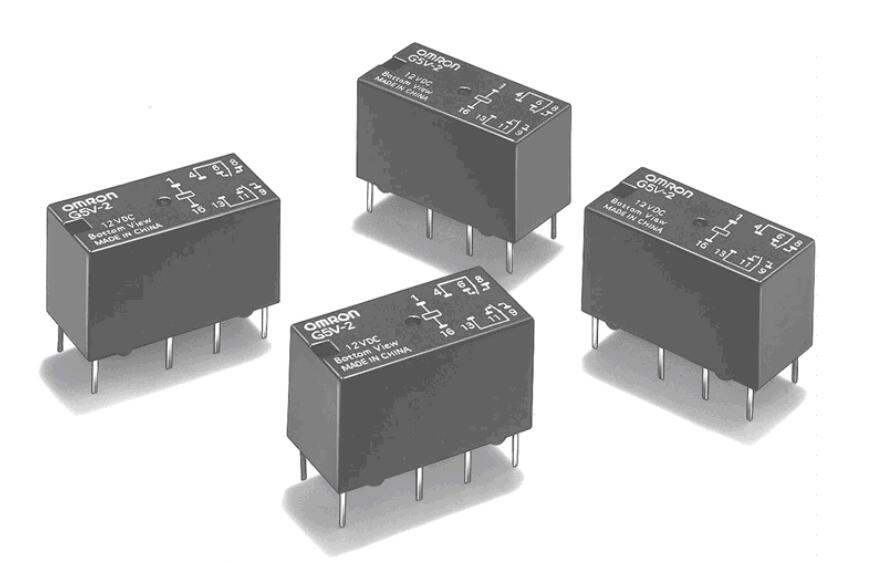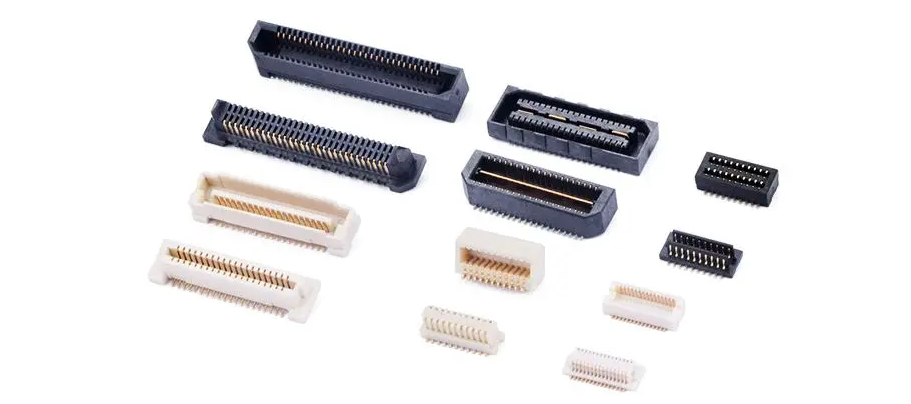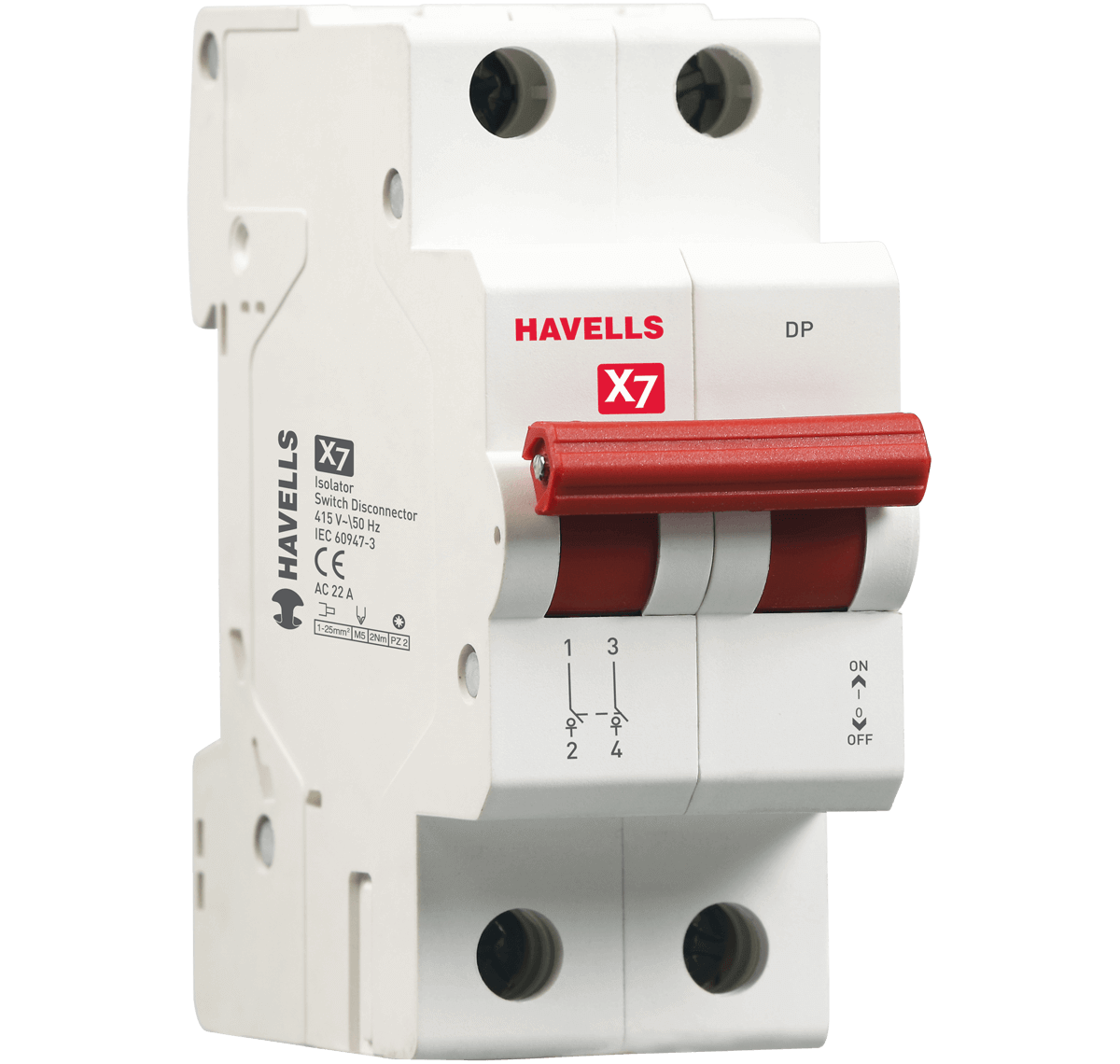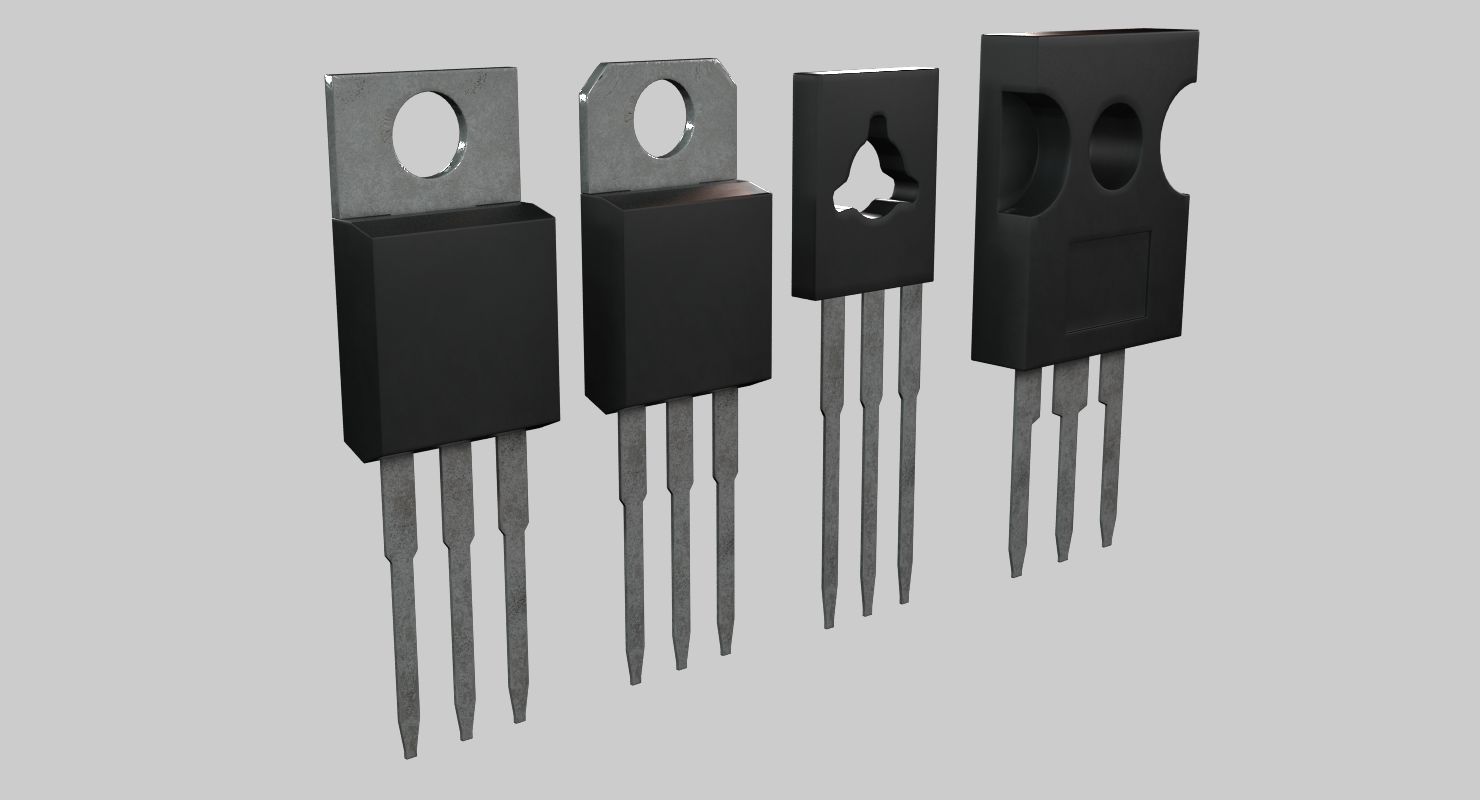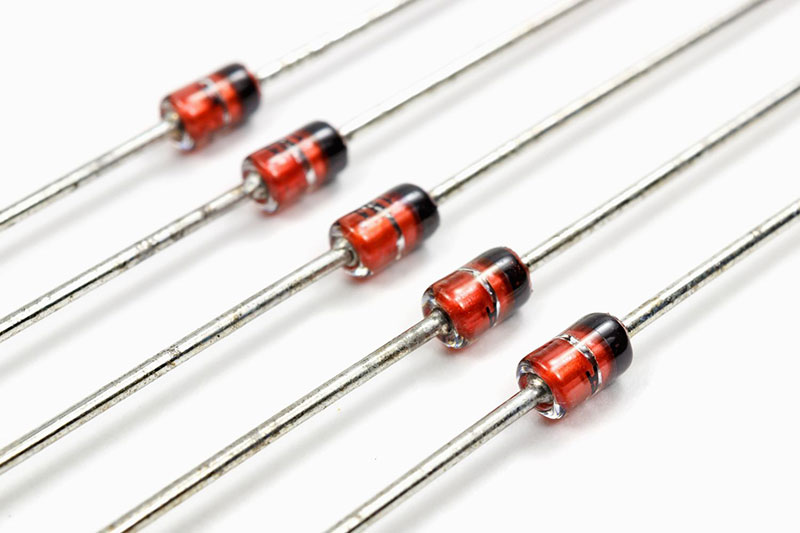What is a Potentiometers (resistive element)?
A potentiometer, also known as a pot, is an electronic component used to adjust the electrical resistance in a circuit. It is a three-terminal variable resistor with a resistive element and a movable wiper that can be adjusted by rotating a shaft or sliding the wiper.

A potentiometers is a variable resistor component with three terminals and an adjustable resistance value according to a specific variation pattern. It is typically composed of a resistive element and a movable wiper. As the wiper moves along the resistive element, a resistance value or voltage proportional to the displacement can be obtained at the output terminal.
Potentiometers can be used as both three-terminal and two-terminal devices. The latter can be seen as a variable resistor. Since its role in a circuit is to obtain an output voltage proportional to the input voltage (applied voltage), it is called a potentiometer.

Definition
A potentiometer is a type of variable resistor. It is usually composed of a resistive element and a rotating or sliding system, where a moving contact travels along the resistive element to obtain a partial voltage output.
Function:
The function of a potentiometer is to adjust the magnitude of voltage (including DC voltage and signal voltage) and current.
Structural characteristics:
A potentiometer has two fixed terminals for the resistive element. By manually adjusting the shaft or slider, the position of the moving contact on the resistive element is changed, thus altering the resistance value between the moving contact and either fixed terminal. Consequently, the voltage and current magnitude are modified.
A potentiometer is an adjustable electronic component consisting of a resistive element and a rotating or sliding system. When a voltage is applied between the two fixed contacts of the resistive element, the position of the moving contact on the resistive element can be changed by the rotating or sliding system. This allows obtaining a voltage that is proportional to the position of the moving contact relative to the fixed contacts. Potentiometers are commonly used as voltage dividers and are considered four-terminal devices in such applications. They are often used in volume controls of audio systems and for adjusting the power of laser diodes. Potentiometers are adjustable electronic components.
A variable resistor used for voltage division. One or two movable metal contacts are pressed tightly against the exposed resistive element. The position of the contacts determines the resistance between any terminal and the contact. Potentiometers can be categorized based on their materials, such as wire-wound, carbon film, and solid-core potentiometers. They can also be classified based on the relationship between the output voltage and input voltage ratio and the rotation angle, such as linear potentiometers (showing a linear relationship) and function potentiometers (showing a curved relationship). The main parameters include resistance value, tolerance, and rated power. Potentiometers are widely used in electronic devices, serving as volume controls in audio systems and receivers.
Identification
Further analysis of the waveform on the right and expanding it on the timeline reveals that although the waveforms of the left and right rotations of the pulse potentiometer are the same, there are differences in the sequence of the output waveforms. During left rotation, in the first state, foot 1 transitions to a low level before foot 2; in the second state, foot 2 also transitions to a low level; in the third state, foot 1 transitions to a high level before foot 2; in the fourth state, foot 2 also transitions to a high level. When the pulse potentiometer is rotated to the right, the change in the output waveform of foot 1 and foot 2 is exactly opposite to that of left rotation. Therefore, the rotation direction of the pulse potentiometer can be identified based on the time recognition method (comparing the time difference between the appearance and disappearance of low levels in P1.0 and P1.1). In dynamic scanning, due to factors such as sampling frequency and operation speed, it is difficult to accurately measure the waveforms of P1.0 and P1.1, as well as the timing of the appearance and disappearance of low levels. Therefore, quick sampling of the voltage levels of P1.0 and P1.1 can only be done. According to the waveform shown in Figure 1, when the combined voltage levels of P1.0 and P1.1 are 01 00 10 11 in sequence, which forms a byte, namely 4BH, it indicates a decrease of one volume level due to left rotation. Similarly, when the combined voltage levels of P1.0 and P1.1 are 10 00 01 11 in sequence, which forms a byte, namely 87H, it indicates an increase of one volume level due to right rotation. Here, "4BH" is referred to as the feature code for left rotation by one level, and "87H" is referred to as the feature code for right rotation by one level. The task of programming is to identify these two feature codes during the rotation of the pulse potentiometer, and based on this, control the volume increase or decrease. In practical programming, there are different methods to identify these two feature codes. However, through comparison in practice, we have found that the positional sampling method is an ideal method. This method does not have special requirements for sampling frequency and operation speed, and it does not require timers and interrupt resources. It can be completed within the main program, and it has the advantages of simple programming, strong anti-interference ability, and reliable operation.
Conformity
Conformity, also known as compliance, refers to the degree of conformity between the actual output function characteristics of a potentiometer and the required theoretical function characteristics. It is represented by the percentage of the maximum deviation between the actual characteristics and theoretical characteristics with respect to the applied total voltage. It can represent the precision of the potentiometer.
Resolution
Resolution depends on the theoretical accuracy of the potentiometer. For wirewound and linear potentiometers, resolution is represented by the percentage of the resistance change caused by the movement of the wiper per turn on the winding with respect to the total resistance. For potentiometers with function characteristics, the resistance of each turn on the winding is different, so the resolution becomes a variable. In this case, the resolution of the potentiometer generally refers to the average resolution of the segment with the maximum slope on the function characteristic curve.
Sliding Noise
Sliding noise is a specific type of noise associated with potentiometers. When the resistance value changes, due to improper resistance distribution, improper coordination of the rotating system, and the presence of contact resistance in the potentiometer, the moving contact on the resistive surface generates not only the useful signal but also fluctuating noise.
For wirewound potentiometers, in addition to the contact noise between the moving contact and the winding mentioned above, there is also resolution noise and shorting noise. Resolution noise is caused by the step-like resistance change, while shorting noise occurs when the moving contact moves on the winding and shorts adjacent turns. It is proportional to the current flowing through the winding, the resistance of the turns, and the contact resistance between the moving contact and the winding.
Mechanical Life
The mechanical life of a potentiometer, also known as wear life, is often represented by mechanical durability. Mechanical durability refers to the total number of reliable movements of the moving contact under specified test conditions and is commonly expressed in "cycles". The mechanical life of a potentiometer varies greatly depending on its type, structure, materials, and manufacturing processes.
In addition to the aforementioned characteristic parameters, potentiometers also have rated power, allowable resistance deviation, maximum operating voltage, rated operating voltage, insulation voltage, temperature parameters, noise voltage, and high-frequency characteristics. The significance of these parameters is the same as that of the corresponding characteristic parameters of resistors.
Classification
The key components of a potentiometer are the resistive element and the wiper. Potentiometers can be classified into several types based on the structure and presence of a switch in the resistive element. They can also be categorized based on the material of the resistive element, such as wirewound, carbon film, metal glaze, organic solid core, and conductive plastic. The electrical performance of a potentiometer primarily depends on the material used. Additionally, there are potentiometers with resistive elements made of metal foil, metal film, and metal oxide film for special applications. Depending on their usage characteristics, potentiometers can be classified as general-purpose, high-precision, high-resolution, high-resistance, high-temperature, high-frequency, and high-power potentiometers. They can also be categorized based on the method of resistance adjustment, such as adjustable type, semi-adjustable type, and trimmer type (the latter two are also known as semi-fixed potentiometers). In order to overcome the adverse effects of brush movement on the performance and lifespan of potentiometers, non-contact potentiometers without physical contact between the wiper and the resistive element have been developed, such as photoelectric and magnetoresistive potentiometers, which are used for specific applications in small quantities.
Wirewound Potentiometers: These potentiometers have advantages such as high precision, good stability, low temperature coefficient, and reliable contact. They are also resistant to high temperatures and can handle high power loads. However, they have limitations such as a narrower resistance range, poor high-frequency performance, low resolution, and the tendency for high resistance wirewound potentiometers to break, larger size, and higher price. This type of potentiometer is widely used in electronic instruments and meters. The resistive element of a wirewound potentiometer is made by winding a resistive wire on an insulating material. There are many types of resistive wire, and the choice of material depends on the structure of the potentiometer, the space available for accommodating the wire, the desired resistance value, and the temperature coefficient. Thinner resistive wire allows for higher resistance values and resolution within a given space. However, if the wire is too thin, it is prone to breakage during use, which affects the lifespan of the sensor.
Carbon Film Potentiometers: These potentiometers have a wide range of resistance values, good resolution, simple manufacturing processes, and low cost. However, they have disadvantages such as high dynamic noise and poor moisture resistance. This type of potentiometer is suitable for use as functional potentiometers and is widely used in consumer electronic products. The use of printing technology has enabled automated production of carbon film sheets.
Organic Solid Core Potentiometers: These potentiometers have a wide range of resistance values, high resolution, good heat resistance, strong overload capacity, good wear resistance, and high reliability. However, they have poor moisture resistance, thermal stability, and dynamic noise characteristics. This type of potentiometer is generally manufactured as small semi-fixed potentiometers for fine adjustments in circuits.
Metal Glaze Potentiometers: They combine the advantages of organic solid core potentiometers and have a smaller temperature coefficient of resistance (similar to wirewound potentiometers). However, they have high dynamic contact resistance and equivalent noise resistance. Therefore, they are mostly used for semi-fixed resistance adjustment. This type of potentiometer has made significant advancements in terms of temperature resistance, moisture resistance, and load impact resistance, making it reliable for operation in demanding environmental conditions.
Conductive Plastic Potentiometer: Wide resistance range, high linear accuracy, strong resolution, and extremely long wear life. Although it has a large temperature coefficient and contact resistance, it can still be used in analog and servo systems in automatic control instruments.
Digital Potentiometer: A potentiometer made using integrated circuit technology; a series of resistors is integrated into a chip, and the resistance is controlled by MOS transistors connected in series with a network and a common terminal. The control accuracy is determined by the number of control bits, usually 8-bit, 10-bit, 12-bit, etc. It can be used in analog circuits for impedance matching, amplification factor control in amplification circuits, etc. It avoids the troubles of jitter adjustment operations and provides a convenient way for automatic gain, voltage variation, impedance matching, etc. in devices.
Multi-turn Precision Adjustable Potentiometer: In some industrial control and instrument circuits, high adjustable precision is often required. To meet production needs, a multi-turn adjustable potentiometer is used in such circuits. This type of potentiometer has advantages such as a large step range and high precision.
Resistance Material Classification:
l Carbon Film: Uses carbon film as the resistive film.
l Metal Film: Uses a special cermet film made of ceramic and metal materials as the resistive film.
l Wirewound: Uses a metal wire wound as the resistor. It can withstand higher power compared to carbon film or metal film.
Construction Classification:
l Rotary: The most common form, with a typical rotation angle of about 270-300 degrees.
l Single-turn: Another common form.
l Multi-turn: Used in applications that require precise adjustments.
l Linear Slide: Usually used in mixers to easily indicate the position of the volume and control fade-in and fade-out.
Quantity Classification:
l Single Gang: One shaft controls a single potentiometer.
l Dual Gang: Two potentiometers are controlled by the same shaft, mainly used in stereo systems to simultaneously control two channels.
Resistance Value Scale Classification:
l Linear Scale: The resistance value changes linearly with the rotation angle or movement distance. This type of potentiometer is called a "B-type" potentiometer.
l Logarithmic Scale: The resistance value changes logarithmically with the rotation angle or movement distance. This type of potentiometer is mainly used for volume control. The commonly used "A-type" potentiometer is suitable for situations where clockwise rotation increases the volume and counterclockwise rotation decreases it. In addition, there is a "C-type" potentiometer with the opposite direction of logarithmic scale variation.
According to the classification of resistive material, potentiometers can be divided into two categories: wirewound potentiometers and non-wirewound potentiometers. Wirewound potentiometers can be further classified into general-purpose wirewound potentiometers, precision wirewound potentiometers, high-power wirewound potentiometers, and preset wirewound potentiometers. Non-wirewound potentiometers can be divided into solid potentiometers and film potentiometers. Solid potentiometers include organic synthesis solid potentiometers, inorganic synthesis solid potentiometers, and conductive plastic potentiometers. Film potentiometers include carbon film potentiometers and metal film potentiometers, among others.
Other Special Types:
Switched Potentiometer: Usually used to combine volume control and power switch, where counterclockwise rotation to the lowest position cuts off the switch and turns off the power.
Function
The main functions of a potentiometer in an electrical circuit are as follows:
1. Used as a voltage divider: A potentiometer is a continuously adjustable resistor. By adjusting the knob or slider of the potentiometer, the moving contact slides along the resistive element. In this way, an output voltage can be obtained at the output terminal of the potentiometer that is proportional to the applied voltage and the rotation angle or travel distance of the movable arm.
2. Used as a variable resistor: When a potentiometer is used as a variable resistor, it should be connected as a two-terminal device. Within the range of the potentiometer's travel, a smooth and continuous change in resistance value can be obtained.
3. Used as a current controller: When a potentiometer is used as a current controller, one of the selected current output terminals must be the sliding contact terminal.
Notes
1. The resistive element of the potentiometer is mostly made of synthetic resin such as multi-carbonate. It should avoid contact with the following substances: ammonia water, other amines, alkaline solutions, aromatic hydrocarbons, ketones, hydrocarbon compounds of fats, strong chemicals (with excessively high acid-base values), etc., as they may affect its performance.
2. When soldering the terminals of the potentiometer, avoid using water-based flux, as it may promote metal oxidation and material mildew. Avoid using poor-quality soldering flux, as poor soldering tin may cause difficulties in tinning, resulting in poor or broken connections.
3. If the temperature and time of soldering the terminals of the potentiometer are too high or too long, it may damage the potentiometer. For plug-in terminals, the soldering should be completed within 3 seconds at a temperature of 235℃±5℃, and the soldering should be at least 1.5mm away from the potentiometer body. Do not use solder flux to penetrate the circuit board during soldering. For wire-type terminals, the soldering should be completed within 3 seconds at a temperature of 350℃±10℃. The terminals should also avoid heavy pressure, as it may cause poor contact.
4. During soldering, the height adjustment of rosin (flux) entering the printing machine board should be appropriate to avoid the flux from entering the inside of the potentiometer. Otherwise, it will cause poor contact between the brush and the resistive element, resulting in noise interference and other undesirable phenomena.
5. Potentiometers are best used in voltage adjustment structures, and the wiring method should choose "1" terminal connected to ground. Avoid using current adjustment structures because the contact resistance between the resistance and the contact piece is not conducive to high current flow.
6. The surface of the potentiometer should avoid condensation or water droplets and should not be used in humid places to prevent insulation degradation or short circuits.
7. When installing a "rotary type" potentiometer, the tightening force of the fixing nut should not be too tight to avoid damaging the threads or causing poor rotation. When installing an "iron shell linear slide type" potentiometer, avoid using excessively long screws, as they may hinder the movement of the slider or directly damage the potentiometer itself.
8. During the process of putting the knob on the potentiometer, the pushing force should not be too strong (should not exceed the parameter index of the axial push-pull force specified in the "specification sheet"), otherwise it may damage the potentiometer.
9. The operating force (rotation or sliding) of the potentiometer will become lighter as the temperature rises and tighter as the temperature drops. If the potentiometer needs to be used in a low-temperature environment, special low-temperature grease should be used.
10. The shaft or slider of the potentiometer should be designed as short as possible. A shorter shaft or slider provides better stability and tactile feel. Conversely, a longer shaft or slider can cause more shaking and changes in tactile feel.
11. The power rating of carbon film potentiometers can withstand temperatures up to 70°C. Using them at temperatures higher than 70°C may result in loss of functionality.
Main Parameters
The main parameters of a potentiometer include nominal resistance, rated power, resolution, sliding noise, resistance variation characteristics, wear resistance, zero resistance, and temperature coefficient.
1. Rated Power
The maximum power that can be dissipated on the two fixed terminals of a potentiometer is the rated power of the potentiometer. It should be noted that the rated power is not equal to the power between the center tap and the fixed terminal. The rated power of a potentiometer refers to the maximum power that can be continuously consumed under specified conditions of atmospheric pressure (87-107 kPa) and rated temperature in DC or AC circuits. The rated power series of wirewound and non-wirewound potentiometers are shown in Table 2.
2. Nominal Resistance
The nominal resistance is the resistance value marked on the product. Its series is similar to that of resistors.
3. Tolerance Grade
The range of measured resistance values within the tolerance range of the nominal resistance can allow errors of ±20%, ±10%, ±5%, ±2%, or ±1% depending on the accuracy grade. The accuracy of precision potentiometers can reach 0.1%.
4. Resistance Variations
This refers to the relationship between the resistance value and the rotation angle (or sliding travel) of the slider. This relationship can take any functional form, with commonly used linear, logarithmic, and reverse logarithmic (exponential) forms. In use, linear potentiometers are suitable for use as voltage dividers, while reverse logarithmic (exponential) potentiometers are suitable for volume controls in radios, tape recorders, turntables, and televisions. If the same type of potentiometer cannot be found during maintenance, a linear one can be used as a substitute, but a logarithmic one is not suitable as a replacement. Logarithmic potentiometers are only suitable for tone controls, etc.
Resolution
The resolution of a potentiometer, also known as resolution power, refers to the discontinuous change in output voltage when the wiper moves one full rotation for a wirewound potentiometer. The ratio of this change to the output voltage is the resolution. The theoretical resolution of a linear wirewound potentiometer is the reciprocal of the total number of turns of the winding and is expressed as a percentage. The higher the total number of turns of the potentiometer, the higher the resolution.
Naming and Labeling of Potentiometers
1. The naming rule for potentiometers is the same as the naming method for resistors, except that it starts with the letter "W".
2. Labeling method: Potentiometers generally use direct labeling. The model, rated power, resistance value, and the relationship between resistance value and rotation angle are marked on the potentiometer casing using letters and numbers. For example, WT-II-1-1k-X potentiometer represents a single-turn carbon film potentiometer of type II, with a power rating of 1W, a resistance value of 1kΩ, and a linear curve.
Testing and Quality Judgment
The main requirements for potentiometers are: 1) The resistance value meets the requirements. 2) Good contact between the center sliding terminal and the resistive element, smooth rotation. For potentiometers with switches, the switch should operate accurately, reliably, and flexibly. Therefore, the performance of the potentiometer must be checked before use.
1. Resistance measurement: Firstly, select the appropriate resistance range of a multimeter based on the resistance value of the potentiometer being tested, and measure the resistance value between the AC two end terminals. Compare it with the nominal resistance value to see if they match. At the same time, rotate the sliding wiper and check if the value remains constant. If the resistance value is infinite, the potentiometer is damaged.
2. Then measure the contact between the center terminal and the resistive element, i.e., the resistance value between the BC terminals. The method is to use a multimeter with an appropriate ohm range. During the measurement, slowly rotate the shaft and observe the reading on the multimeter. In normal conditions, the reading should steadily change in one direction. If there are fluctuations, drops, or interruptions, it indicates a faulty contact with the moving wiper.
3. When the center terminal slides to the first or last end, ideally, the resistance value between the center terminal and the end terminal is 0. In actual measurements, there may be a certain residual value (generally less than 5Ω), which is considered normal.

